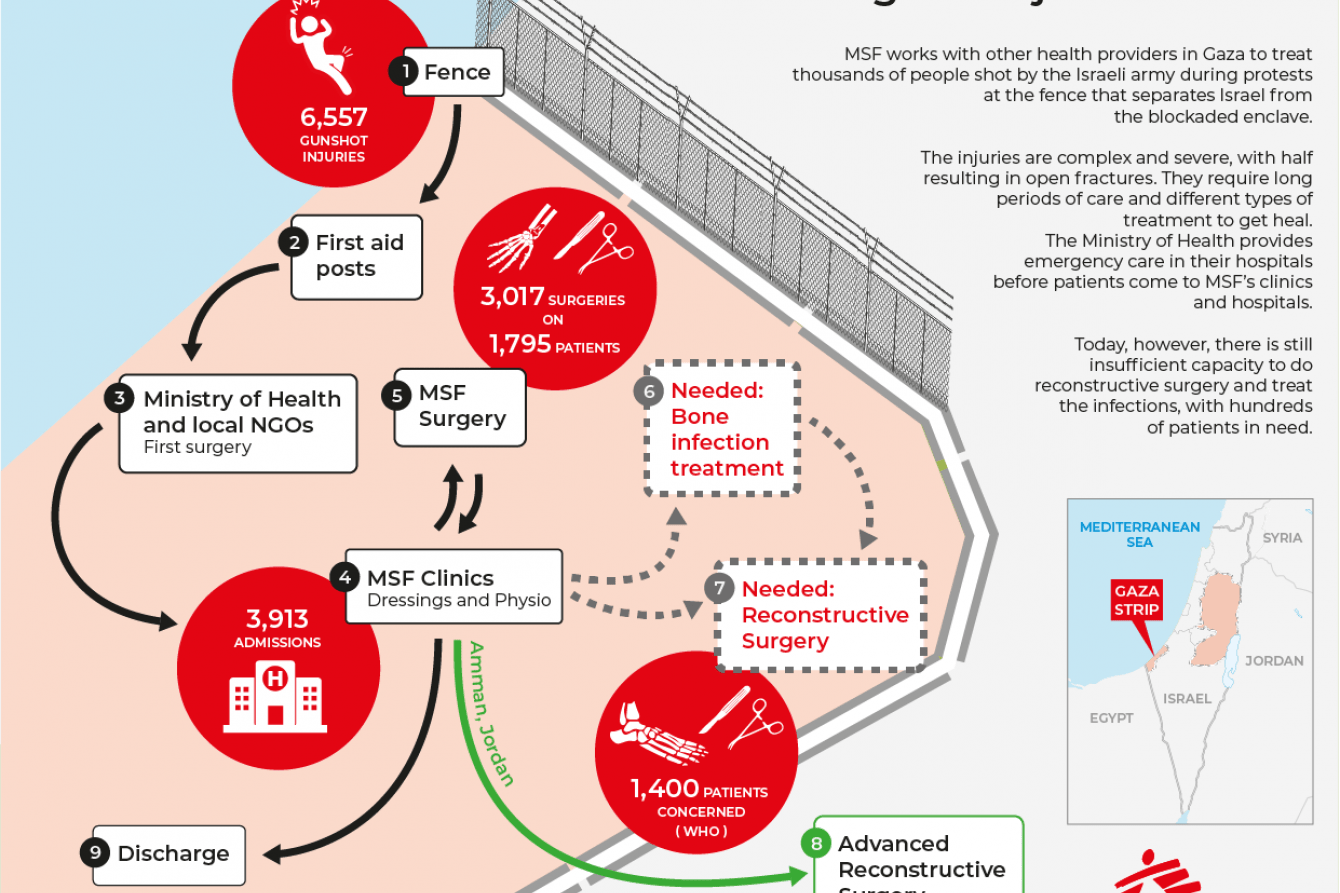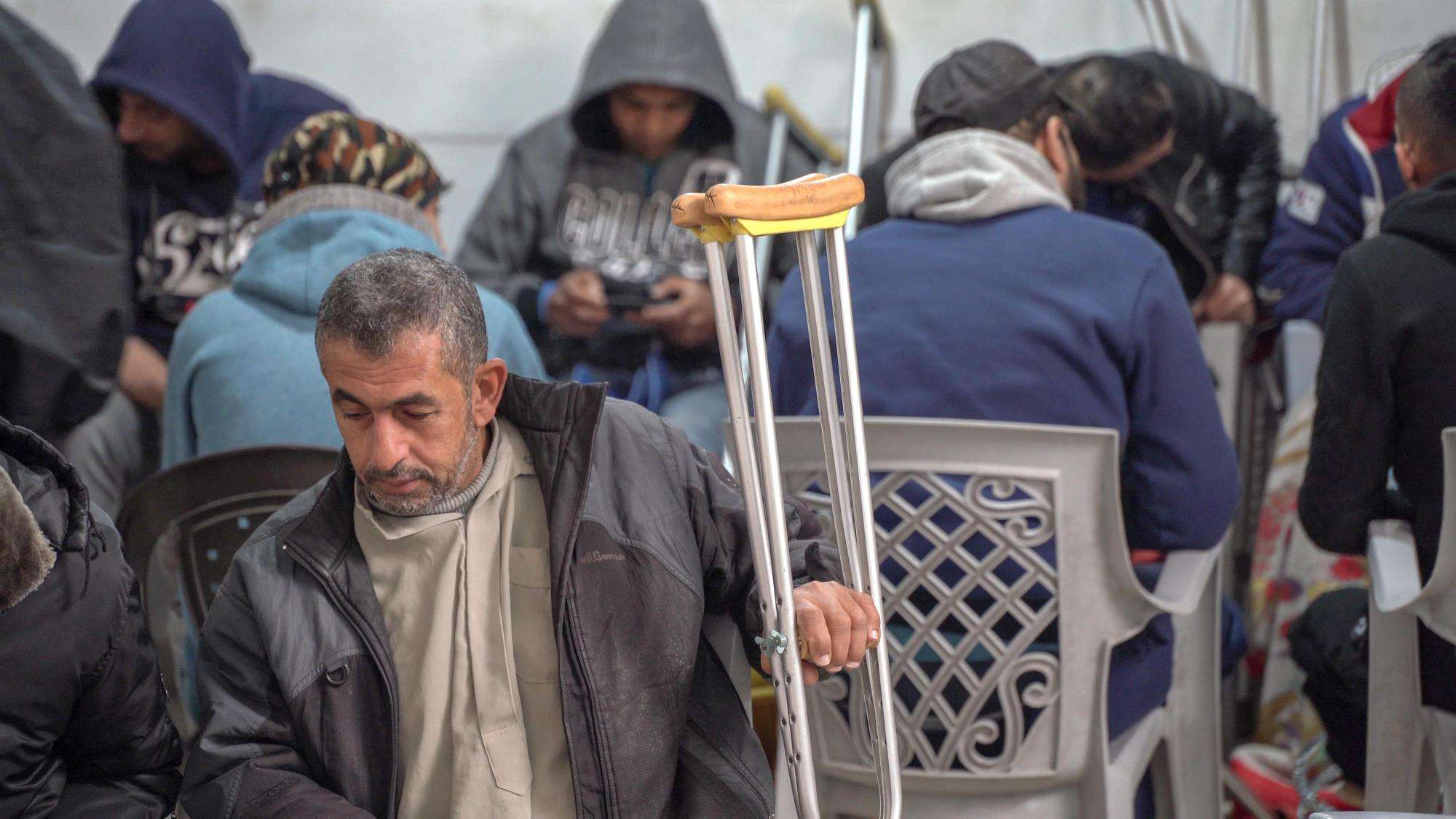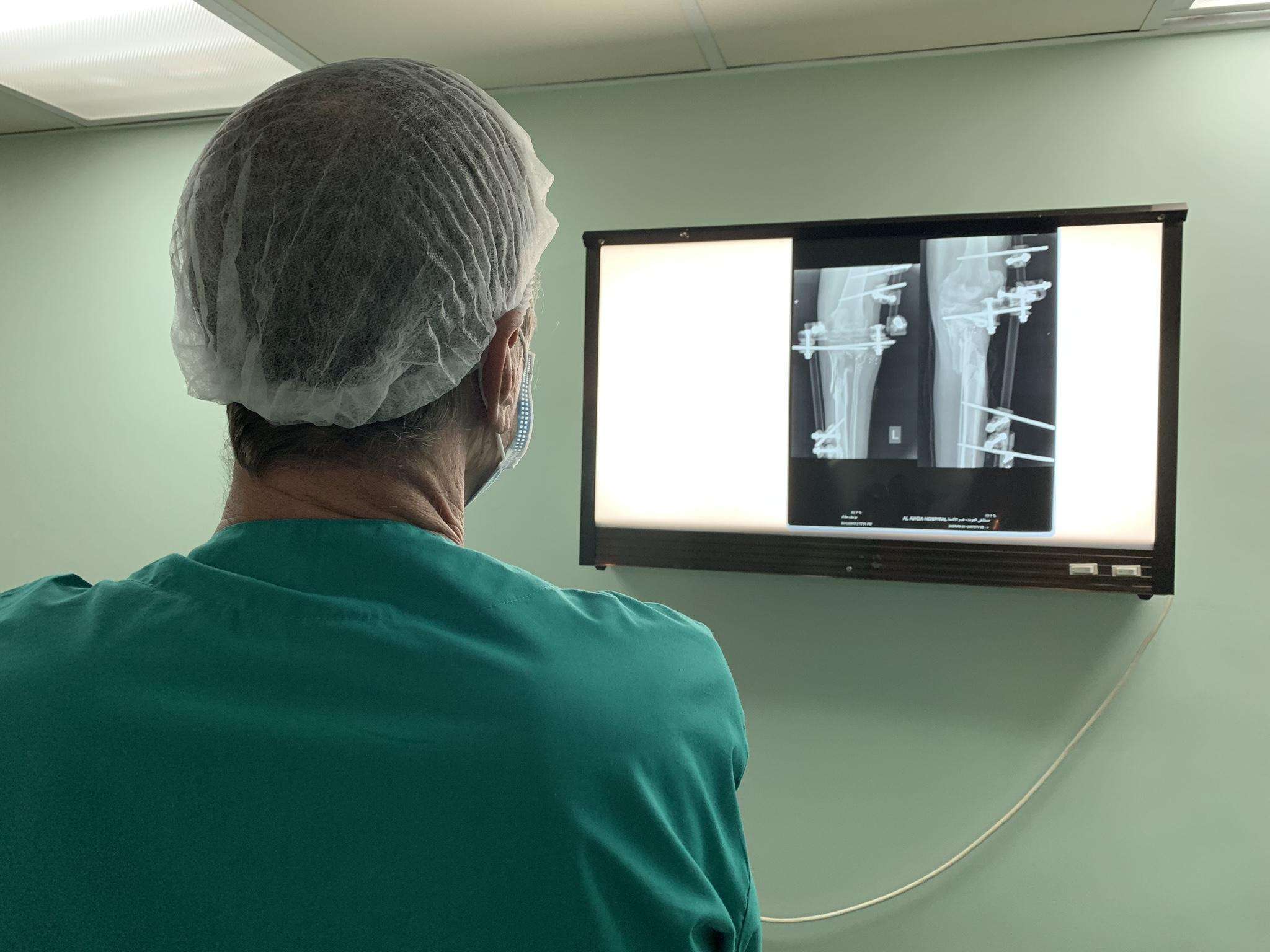One year ago, people in Gaza began holding weekly demonstrations, known as the March of Return, near the border fence with Israel. In response, many protesters have been shot by Israeli forces, resulting in horrific injuries. The medical, human, and financial toll taken on the blockaded enclave has become unbearable as thousands of people have been left to cope with complex and devastating wounds. Despite the efforts of the Ministry of Health in Gaza and the few organizations on the ground, the medical needs vastly exceed available capacity.
Gaza has been completely abandoned in the past year as the more than 6,500 people shot by Israeli forces during the course of protests have largely been left to their fates. Suffering from complex and severe wounds—mostly to the legs—many of these people are now waiting with diminishing hope for comprehensive treatment of their injuries. Searching for help in a health system decimated by more than a decade of Israeli blockade, they have also been abandoned by the different branches of the Palestinian authorities, stuck in a political stalemate where the needs of the population fall to the bottom of authorities’ agenda.
Medically and financially under-resourced, the situation in Gaza is more than can be managed by health care workers in the blockaded strip, despite the efforts of the Ministry of Health and the few other health organizations involved in the response. Doctors Without Borders/Médecins Sans Frontières (MSF) has tripled its capacity in Gaza since the beginning of 2018, but we are overwhelmed by the scale of the needs.
These are not simple wounds that can be easily stitched up. Limbs have been destroyed and bones shattered. These people require multiple surgeries just to clean and close their wounds. Many of the wounds have also become infected, preventing reconstructive surgeries that are in any case available only to a tiny few in Gaza.
We have opened inpatient departments, added to our surgical teams, and are caring for hundreds of patients daily in our clinics in Gaza. Yet we still lack the number of beds necessary to treat these patients, as well as the number of doctors with the expertise required to tackle drug-resistant infections or perform the complex surgeries required to fuse bones back together.
All of the authorities responsible for Gaza—on both the Israeli and Palestinian sides—have a duty to take concrete action. Compounding the situation, violence continues along the border fence and recent weeks have seen a further escalation of tension in the area. We are not naïve about the current political situation, but these health needs must be answered. We must also express our disappointment with the lack of action by the international community, despite our repeated calls for support.

The risk is that we leave thousands of people to their fate: in pain, facing amputations and a lifetime of disabilities. These effects will not be confined to those shot—they will ripple outwards in a society already brought to the brink of collapse by the blockade. Without urgent action, the future holds even more misery for people trapped by a series of political spats that have little to do with them.





